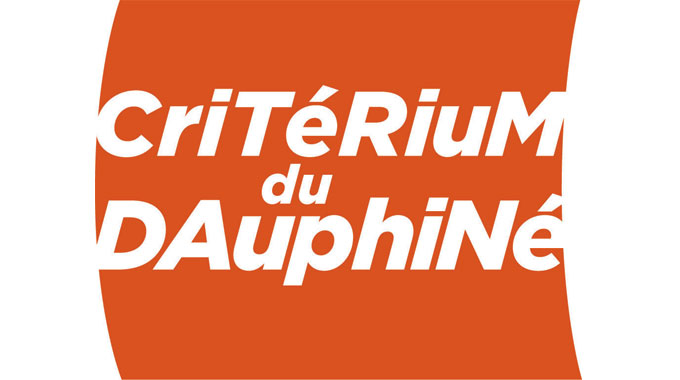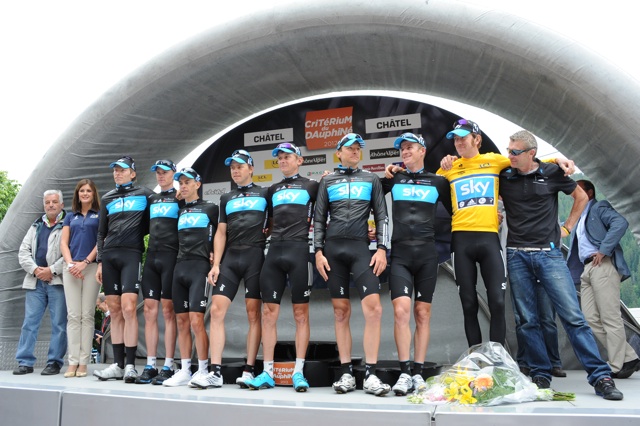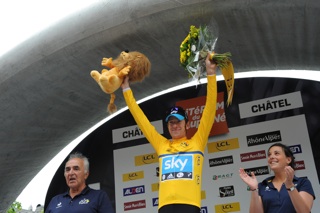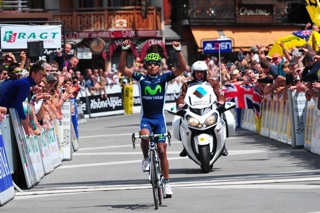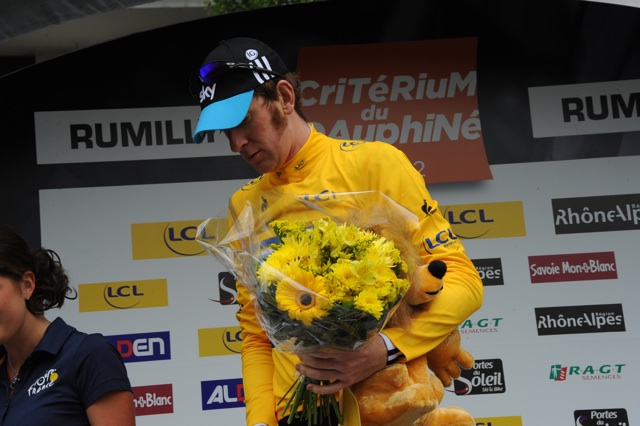The Criterium du Dauphiné is considered the ultimate preparation event for the Tour de France.
 With similar types of stages to those in the Tour (rolling, flat stages, high mountain stages, a long time trial) it offers the riders an opportunity to experience the breadth of terrain awaiting them in July.
With similar types of stages to those in the Tour (rolling, flat stages, high mountain stages, a long time trial) it offers the riders an opportunity to experience the breadth of terrain awaiting them in July.
Such varied and challenging terrain is what entices riders of the calibre of Wiggins, Evans, and Andy Schleck in pursuit of a pre-Tour form check.
Here’s a look at the eight stages that will provide the parcours for this year’s Dauphiné.
Sunday June 3
Prologue: Grenoble (5.7km) – individual time trial – flat
Grenoble hosts its second WorldTour time trial in two years (Cadel Evans took the yellow jersey here on the penultimate stage of the 2011 Tour de France). This course is pan flat and extremely short, and so one for riders capable of producing big watts. With just five corners, it’s unlikely to provide a test of bike handling skills.
Monday June 4
Stage one: Seyssins to Saint-Vallier (187km) – rolling
Six categorised climbs on the opening road stage suggest that while the Dauphine is used as preparation for the Tour, it is no walk in the park. Just 27km in to this 187km stage, the riders will tackle the slopes of the 571 metre, second category Cole de Parmenie. The last climb of the day, the Cote de la Sizeranne, arrives less than 10km from the finish, but is unlikely to spoil a party for the sprinters in Saint-Vallier.
Tuesday June 5
Stage two: Lamastre to Saint-Felicien (160km) – medium mountains
As the race moves into the Ardeche, the climbs become steeper, while remaining at second category, and peaking at the 1,320 metre Col de Montivernoux, which the riders will tackle after a 45km roll out from Lamastre. The category four, 621 metre Col de Fontaille at 138km could provide a spring board for an attack over the final 22km into Saint-Felicien.
Wednesday June 6
Stage three: Givors to La Clayette (167km) – rolling
The first half of the stage contains three climbs, with the third category, Cote de Saint Andre at 635m the hardest. The second half is rolling, and the closing kilometres almost entirely flat, with a low rise in the final kilometres. This is a day for the sprinters.
Thursday June 7
Stage four: Villie-Morgon to Bourg-en-Bresse (53.5km) – individual time trial
Is this the stage on which the race is won? Riders possessed of that special ability to climb and time trial will be favoured for the Criterium as the Tour, and this flat, long race against clock (the distance is the same as the Tour’s final ITT) should see the GC contenders show their hands.
Friday June 8
Stage five: Saint-Trivier-sur-Moigans to Rumilly (186.5km) – high mountains
The elite bunch described above, those blessed with the diverse skills required for GC contention will today have to show their climbing ability. The Col du Grand Colombier represents the first haute categorie climb of the race, a grueling 17.4km ascent at an average gradient of 7.2 per cent. Once over the summit, the riders face a short, steep descent before beginning the climb of the 1,051m Col de Richmonde, Once crested, they’re into another steep descent to begin the 45km run to a flat finish in Rumilly.
Saturday June 9
Stage six: Saint-Alban-Leysse to Morzine (167.5km) – high mountains
The Queen stage and the second of three challenging days in the mountains, this 167.5km slog through the Haute Savoie department of eastern France should provide another opportunity for the GC contenders to go head-to-head and for the climbing specialists to target a stage win. The road heads skywards from the start line, and just 11.5km out of Saint-Alban-Leysse the riders will be at the 1,173m summit of the Col de Plainpalais. Two third category climbs and about 90km will then lie between them and the first category Col de la Colombiere. A steep descent marks the approach to the third category Cote de Chatillon sur Cluses before the final ascent of the 1,691m Col de Joux Plan and short run in to Morzine.
Sunday June 10
Stage seven: Morzine to Chatel (124.5km) – high mountains
While not as severe as the previous stage, the seventh stage from Morzine to Chatel still contains three categorised climbs, including the first category, 1230 metre Col du Corbier, to be faced by riders after 102km and three categorised climbs in their legs. Once over the Corbier, they must still face a third category climb into Chatel. This could be a great closing stage, offering a final roll of the dice for GC contenders.

